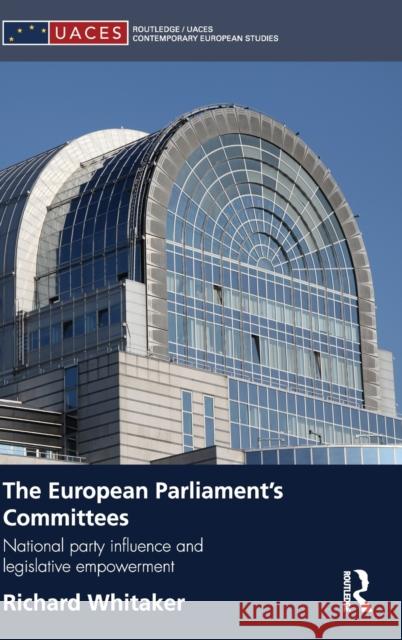The European Parliament's Committees: National Party Influence and Legislative Empowerment » książka
The European Parliament's Committees: National Party Influence and Legislative Empowerment
ISBN-13: 9780415485258 / Angielski / Twarda / 2010 / 170 str.
The European Parliament's Committees: National Party Influence and Legislative Empowerment
ISBN-13: 9780415485258 / Angielski / Twarda / 2010 / 170 str.
(netto: 720,43 VAT: 5%)
Najniższa cena z 30 dni: 705,23 zł
ok. 16-18 dni roboczych.
Darmowa dostawa!
This book analyzes the development of the European Parliament's (EP) committees and their relationship with national political parties in the light of the EP's increased legislative role over the last three decades. The book argues that national parties have a greater incentive to care about what goes on in the EP given the growth in its legislative power. Because most of the EP's detailed legislative work takes place in its committees, national parties should be concerned about their involvement with the EP's committee system. Based on extensive original research, this book shows how the EP's committees have changed over time in response to legislative empowerment and analyzes how national parties and individual MEPs use the committee system to further their policy goals. The book makes a theoretical contribution by providing an explanation for the variation in powers of committees between separated and fused systems of government and by adapting theories of legislative organization developed in the context of the US Congress, to the EP. The European Parliament's Committees will be of interest to students and scholars studying the European Parliament, EU institutions, policy-making, and the development of legislatures and political parties.
This book analyses the development of the European Parliament’s (EP) committees and their relationship with political parties in the light of the EP’s increased legislative role in the last two decades.
Given that most of the EP’s detailed legislative work takes place in its committees, the relationship between them and political parties is crucial for explaining how the EP works. Based on extensive original research, this book will provide an up-to-date analysis looking for changes over time in the EP’s committees and the amount of control exercised over them by national political parties in the light of both the EP’s greater legislative role, and the influx of new members following the 2004 enlargement. The book make an important theoretical contribution by providing an explanation for the variation in powers of committees between separated and fused systems of government and by adapting theories of legislative organisation developed in the context of the US Congress, to the EP.
It will be of interest to students and scholars studying the European Parliament, EU institutions, policy-making, development of legislatures and political parties.











